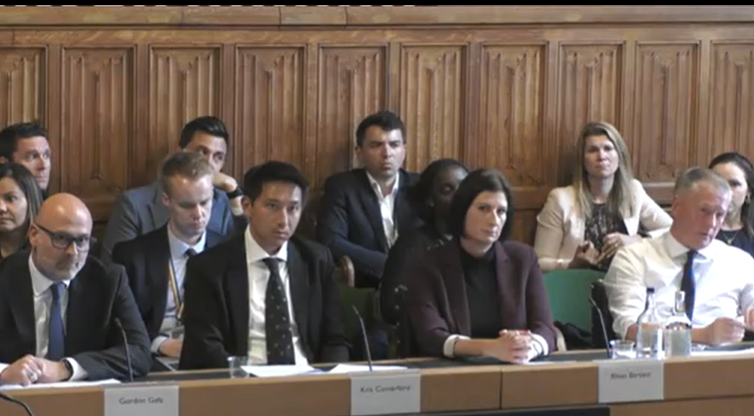A decade in the making, the new EU Deforestation Regulation (EUDR) is designed to curb global deforestation, and slash associated greenhouse gas emissions in the process, as part of the EU’s wider efforts to achieve climate neutrality by 2050. We look at what businesses need to do to be compliant ahead of the December 2024 EUDR implementation date.
On June 29, 2023, the new EU Deforestation Regulation (EUDR) came into force.
For companies operating any part of their supply chain within the trading bloc, the new EUDR regulation rules have some wide-reaching implications.
And with the deadline for compliance set at the end of 2024, there’s no time to waste when it comes to ensuring you’re prepared.
Here’s everything you need to know about the EU regulation on deforestation-free supply chains and what it means for your business.
EUDR explained
The core aim of the EUDR requirements is to prevent companies from placing commodities linked with deforestation and forest degradation onto the EU market or exporting them from the EU.
The Food and Agriculture Organization of the United Nations (FAO) estimates that 420 million hectares of forest were lost to deforestation between 1990 and 2020.
And as well as the significant impact on biodiversity, it's thought that deforestation accounts for 12-20% of greenhouse gas emissions, globally.
By limiting the manufacture and sale of products that contribute to deforestation - and promoting deforestation-free alternatives - the EU is hoping to reduce this impact across its 27 member states.
Requirements for companies
Any operator, trader or manufacturer placing, making available or exporting one of seven commodities - cattle, cocoa, coffee, palm oil, rubber, soya and wood - or any derivatives from them on or from the EU market will be expected to comply with new due diligence rules set out by EUDR.
These rules extend to products made with these commodities too. So, leather which comes from cattle and chocolate that's made from cocoa for example.
To be made available or exported from the EU, any affected raw materials or products need to be:
- Deforestation-free, i.e., the relevant materials are sourced from areas not affected by deforestation or forest degradation after December 31, 2020
- Produced in accordance with the relevant legislation of the country of production. This includes compliance with that country’s land use rights, environmental protections, forest-related rules and labour rights, among others.
- Covered by a due diligence statement. This statement is divided into three sections:
- Information on the type, quantity and source of products, as well as evidence that they are deforestation-free
- Evidence of a risk assessment to ensure cooperation with indigenous peoples, prevalence of deforestation in the country of production and the complexity of the supply chain, among others.
- Evidence of risk mitigation where the assessment throws up red flags. This may include appointing a compliance officer or an independent audit.
- Information on the type, quantity and source of products, as well as evidence that they are deforestation-free
Given the complexity of this process, companies don’t have long to comply.
By December 30, 2024, all large businesses (with 250+ employees) must be fully compliant with the EU deforestation-free regulation or risk spot checks, penalties and potential bans from the EU market should their products fail to meet requirements by this date.
How to prepare for the EUDR requirements
Any affected companies need to ensure they’re taking steps now to comply with EUDR.
First, map relevant supply chains
The EUDR regulation requires that companies are able to trace products or commodities to their point of origin in order to self-certify them as ‘deforestation-free'. This requires a high level of traceability in what are often complex supply chains, spanning multiple countries and stakeholders. Consider investing in tools that provide a centralised system with which to manage evolving supplier data in one place.
Next, prioritise risk assessment
EUDR requires risk mitigation where commodities or products are non-compliant or originate from countries with a high potential risk for non-compliance. Start with these, implementing risk management practices, working directly with suppliers to improve practices and conducting ongoing surveys or audits, or appointing third-party companies to do so. Where compliance isn’t viable within the timeframe, work proactively to find alternative suppliers.
Third, monitor progress
Compliance ahead of the EUDR implementation date isn’t a one-off exercise. To remain compliant with the EUDR requirements, companies will need to ensure they create robust monitoring frameworks that track any changes at suppliers and identify emerging risks before they breach the conditions of the regulation. Appointing a dedicated EUDR compliance officer to oversee this work could be beneficial and ensure that companies avoid what may be hefty fines and even outright bans.
Want to explore how companies can ensure that the right processes are being carried out at each stage of the supply chain? Then read our report below, exploring the challenges that fully traceable supply chains pose to food businesses...
.jpg)
Greer McNally
Greer has over 15 years’ experience writing about trends in the food and retail sectors. She lives in a little village by the sea in Northern Ireland and loves creating content that informs how people think about the food industry. A recent career highlight was interviewing the legend that is Dr Temple Grandin.
Stay up to date
Stay up to date
Browse Posts
- December 2025
- November 2025
- October 2025
- September 2025
- August 2025
- July 2025
- June 2025
- May 2025
- April 2025
- March 2025
- February 2025
- January 2025
- December 2024
- November 2024
- October 2024
- September 2024
- August 2024
- July 2024
- June 2024
- May 2024
- April 2024
- March 2024
- February 2024
- January 2024
- December 2023
- November 2023
- October 2023
- September 2023
- August 2023
- July 2023
- June 2023
- May 2023
- April 2023
- March 2023
- December 2022
- November 2022
- October 2022
- September 2022
- August 2022
- July 2022
- June 2022
- May 2022
- April 2022
- March 2022
- February 2022
- January 2022
- December 2021
- November 2021
- October 2021
- August 2021
/Blog%20Headers/Preparing%20for%20the%20EU%20Deforestation%20Regulation%20(EUDR)everything%20you%20need%20to%20knowjpg.jpg)

/Blog%20Headers/shutterstock_1927957907%20(1).jpg)
/Blog%20Headers/shutterstock_1845178195%20(2).jpg)
/Blog%20Headers/shutterstock_2133827717%20(1).jpg)
/Blog%20Headers/shutterstock_2473376713.jpg)
/Blog%20Headers/shutterstock_2247276303.jpg)
.png)
.png)




/Blog%20Headers/shutterstock_1834054435.jpg)
.png)


/Blog%20Headers/shutterstock_2498984931.jpg)
.png)
/Blog%20Headers/EUDR%20blog%202025.jpg)
.png)
![[Infographic] Story of a hamper: understanding the traceability journey](https://blog.foodsconnected.com/hubfs/Blog%20Imagery%20(PI%20AUTOMATED)/Blog%20Headers/Story%20of%20a%20hamper%20understanding%20the%20traceability%20journey.jpg)